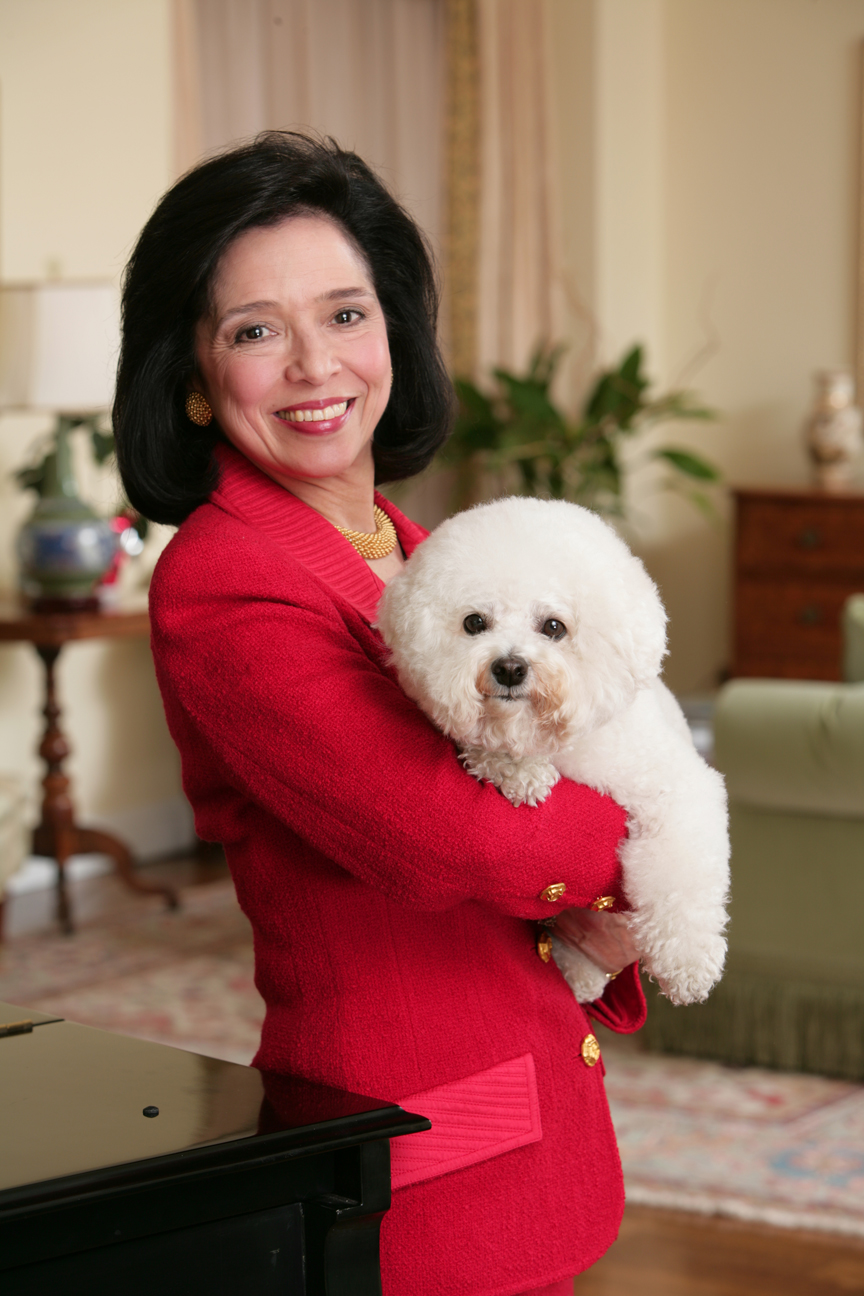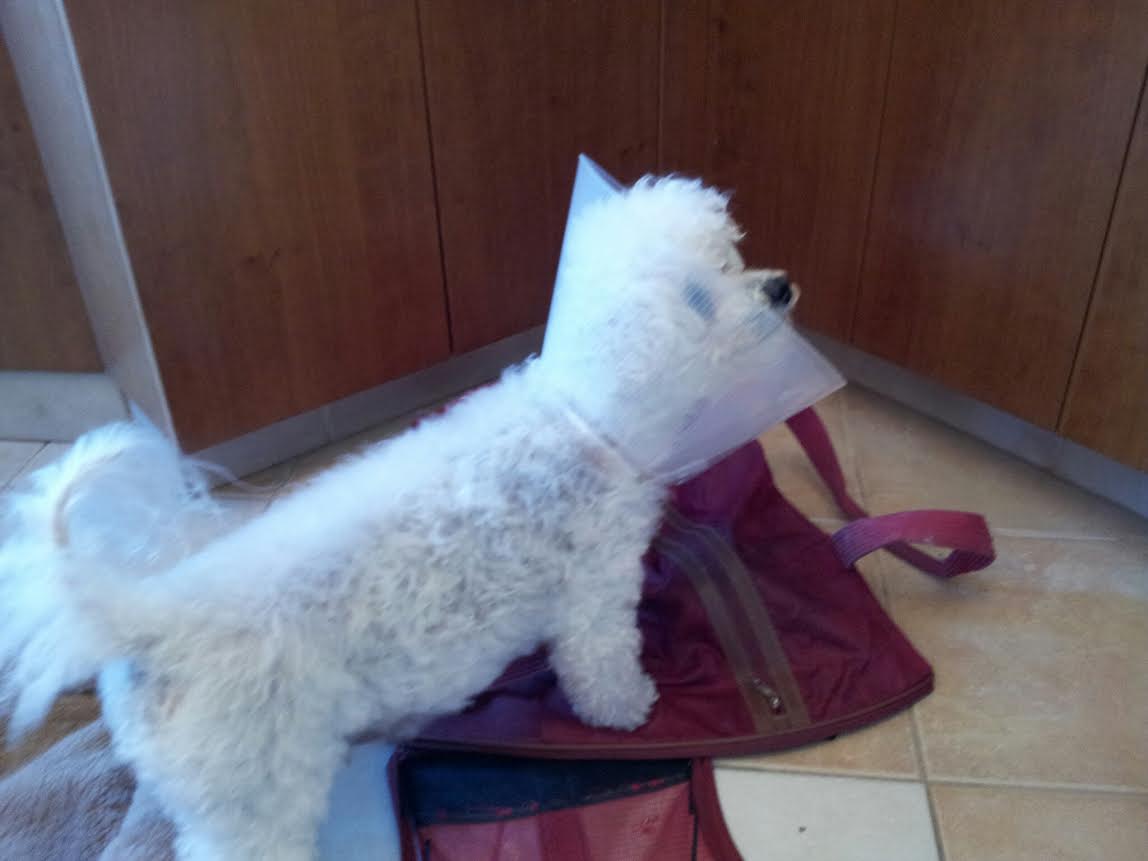 There is a saying familiar to every parent that one is only as happy as one’s unhappiest child. The same is true for those of us who house, care for, pamper, and nurture—we never own—pets. As some of you may know, I am privileged to share my life with Bebe, a gorgeous, brilliant, and commanding 12- year- old Bichon Frisé. If you live or work on campus or nearby, you may have seen him over the years on his daily walks, head up, briskly moving along, happy to greet you, confident and—frankly—somewhat royal in his bearing. He is short as dogs go, but he has a Big Dog attitude and will never let you forget it.
There is a saying familiar to every parent that one is only as happy as one’s unhappiest child. The same is true for those of us who house, care for, pamper, and nurture—we never own—pets. As some of you may know, I am privileged to share my life with Bebe, a gorgeous, brilliant, and commanding 12- year- old Bichon Frisé. If you live or work on campus or nearby, you may have seen him over the years on his daily walks, head up, briskly moving along, happy to greet you, confident and—frankly—somewhat royal in his bearing. He is short as dogs go, but he has a Big Dog attitude and will never let you forget it.
In recent months, however, Bebe’s sense of his Big Dog self has been challenged. Actually, it began last year when I noticed that those big black shiny buttons that are his eyes were starting to look a bit cloudy and grey. As time went on, he began bumping into things as he dashed—or even wandered—around the house. In any other dog, you would have heard whimpers and whines or yelps of complaint. Not my Bebe. He is a brave and tough little guy who never complains about anything. (Too déclassé for him.) By now, of course, I knew—as did he—that he was going blind. I had taken him to his vet who diagnosed cataracts. Who knew that dogs can get cataracts? And as it happens, Bichon Frisés are prone to cataracts, as are dogs who have diabetes. And unfortunately, Bebe also has diabetes. Now we had to decide whether to have the cataracts removed.
While the prognosis was good, the idea of surgery certainly made me nervous. Bebe is an older dog…well, perhaps “mature” is the better word. He is also sensitive to anesthesia. So given that, along with his diabetes, the decision to proceed wasn’t clear cut. Dogs do adapt to blindness and with his exceptional intelligence and courage, I felt he could do well. However, I finally decided he deserved an opportunity to have his eyesight restored.
Reader, I am happy to tell you the operation was a success! The surgery took place in late June. He spent one night in the hospital during which I suffered more than he did. The recuperation period, however, was another story. In order to keep his eyes protected, he had to wear what is called an “Elizabethan collar”—you fashion historians will know why. It is really a cone reminiscent of the gigantic neck ruffs that distinguished 16th and 17th century English apparel. At first, the vet had it fastened with a black and white polka dot bow—not at all Bebe’s style. But bow tie or not, Bebe hated it.

Anyone would. Oh, he didn’t complain, but you could tell that he was uncomfortable and that it made him antsy. He had to constantly recalculate his movements and the spaces around him: the walls, the corners of rooms and buildings, doorways, even his food bowls. He had to figure out how to fit into some of his favorite spots: under certain pieces of furniture, for instance, or into the red carrier that I use to travel with him. He loves this bag. How on earth could he maneuver that long clumsy cone into this beloved bag? Bebe and I managed this one as a team: we inched his little body into the bag tail-end first. But in general, he is clever and creative. He managed, by experimentation, to get around quite confidently. Most important, of course, now he could see. Day by day, his vision improved. Day by day, he became the happy dog-person we were used to having in our midst.
Today Bebe is confident and commanding. His vision has returned; the cone is off. Once again, he trots around the neighborhood and recognizes the usual landmarks: the trees, the buildings, his doggy neighbors. Once again, he dashes around the apartment without bumping into walls and chairs and misplaced objects. Once again, his button eyes are bright, black and shiny, and we are grateful for his renewed vision and spirit.